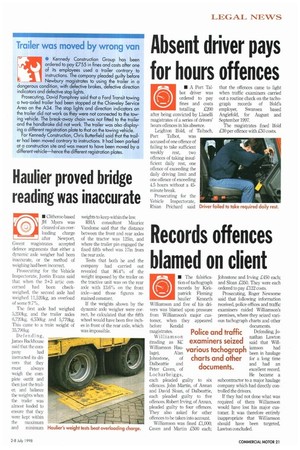Haulier proved bridge reading was inaccurate
Page 23

If you've noticed an error in this article please click here to report it so we can fix it.
• Clitheroe-based JH Myers was cleared of an overloading charge after Newport Gwent magistrates accepted defence arguments that either a dynamic axle weigher had been inaccurate, or the method of weighing had been incorrect.
Prosecuting for the Vehicle Inspectorate, Justin Evans said that when the 2+3 artic concerned had been checkweighed, the second axle had weighed 11,520kg, an overload of some 9.7%.
The first axle had weighed 5,230kg, and the trailer axles 6,720kg, 6,550kg and 5,770kg. This came to a train weight of 35,790kg.
Defending, James Backhouse said that the com pany had instructed its drivers that they must always weigh the complete outfit and then just the trailer, and balance the weights when the trailer was almost loaded to ensure that they were kept within the maximum and minimum weights to keep within the law.
RHA consultant Maurice Vandome said that the distance between the front and rear axles of the tractor was 125in, and where the trailer pin engaged the fixed fifth wheel was 17in from the rear axle.
Tests that both he and the company had carried out revealed that 86.4% of the weight imposed by the trailer on the tractive unit was on the rear axle with 13.6% on the front axle—and those figures remained constant.
If the weights shown by the dynamic axle weigher were correct, he calculated that the fifth wheel would have been five inches in front of the rear axle, which was impossible.












































































































